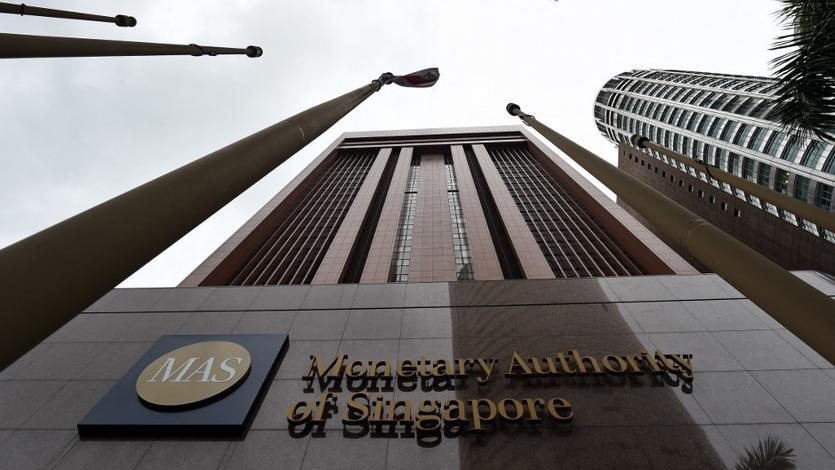 The Monetary Authority of Singapore building is seen in Singapore on May 30, 2017. (PHOTO / FILE / AFP)
The Monetary Authority of Singapore building is seen in Singapore on May 30, 2017. (PHOTO / FILE / AFP)
SINGAPORE - Singapore's economy grew faster than expected in the third quarter, preliminary government data showed on Friday.
Gross domestic product was up 0.7 percent in the July to September period on a year-on-year basis, according to advance estimates from the trade ministry. Economists polled by Reuters had expected growth of 0.4 percent.
On a quarter-on-quarter seasonally adjusted basis, GDP expanded 1 percent in the July to September period.
On Friday, Singapore's central bank kept monetary settings unchanged as inflation in the city-state moderated and economic growth beat expectations.
In a move that surprised economists, the Monetary Authority of Singapore said it would shift to a quarterly schedule of policy statements in 2024 from semi-annual.
The Monetary Authority of Singapore maintained the prevailing rate of appreciation of its currency policy band known as the Singapore dollar nominal effective exchange rate, or S$NEER. There was no change to the width and the level at which the policy band is centered
The MAS maintained the prevailing rate of appreciation of its currency policy band known as the Singapore dollar nominal effective exchange rate, or S$NEER. There was no change to the width and the level at which the policy band is centered.
"Against the external outlook, prospects for the Singapore economy are muted in the near term but should improve gradually in H2 2024," MAS said in a statement.
As part of the increased frequency of its policy statements, monetary policy will be reviewed in January, April, July and October instead of just April and October.
ALSO READ: Singapore's key exports decline for 11th consecutive month
Maybank economist Chua Hak Bin said the more frequent reviews were a positive and welcomed move for markets and analysts as they improve the communication and transparency of policy.
"It may be a reaction to the more volatile currency swings and frequent changes in other central banks policy rates," said Chua.
OCBC economist Selena Ling said the increased frequency was a reflection of how the global economic and geopolitical landscape is evolving.
"The semi-annual frequency had been debated in the past, especially during crises, on whether it allows sufficient flexibility to pivot," Ling said.
Prior to April, the MAS tightened monetary policy five times in a row, including in two off-cycle moves last year.
Inflation has cooled from a 14-year high of 5.5 percent in January and February to 3.4 percent in August
Inflation has cooled from a 14-year high of 5.5 percent in January and February to 3.4 percent in August.
READ MORE: In Singapore, a certificate to own a car now costs $106,000
As a heavily trade-reliant economy, Singapore uses a unique method of managing monetary policy, tweaking the exchange rate of its dollar against a basket of currencies instead of the domestic interest rates used in most other countries.
Singapore in August narrowed its 2023 GDP growth forecast to 0.5 percent to 1.5 percent from 0.5 percent to 2.5 percent previously.
The financial hub avoided a technical recession with the economy expanding 0.1 percent quarter-on-quarter in April to June following a 0.4 percent contraction in the first quarter of 2023.


